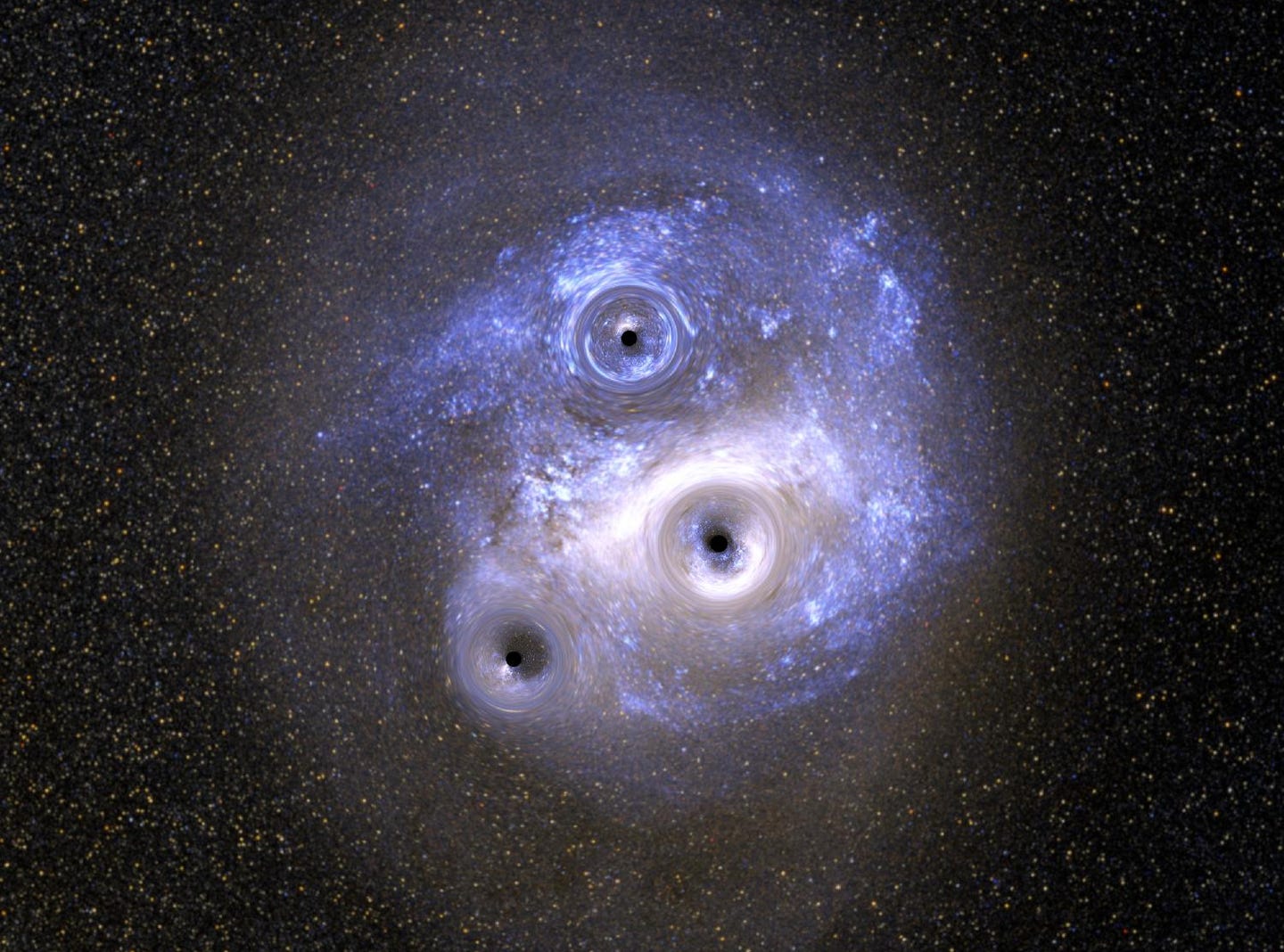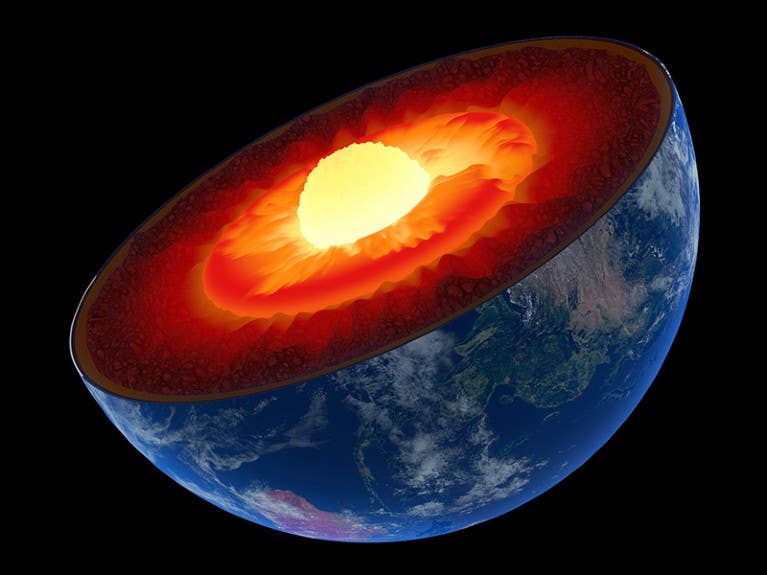Could dark matter be made of black holes?
One theory suggests that black holes might have formed in the Universe’s infancy and could be a component of dark matter.

Gravitational wave detectors, LIGO and Virgo, have detected a curious population of massive black holes, raising some of the biggest questions in modern astronomy. One theory suggests these objects might have formed in the Universe's infancy and could be a component of dark matter, the mysterious substance that makes up much of the cosmos.
Scientists from the Optical Gravitational Lensing Experiment (OGLE) at the University of Warsaw have conducted a nearly 20-year-long study to explore this possibility. Their findings indicate that these massive black holes could account for only a small fraction of dark matter.
This conclusion, published in both Nature and the Astrophysical Journal Supplement Series, suggests that alternative explanations are needed for the sources of the gravitational waves detected.
To grasp the significance of this discovery, it's crucial to understand the broader context of the Universe's composition. Observations show that ordinary matter—the kind we can see and touch—makes up just 5% of the Universe's total mass and energy. In our galaxy, the Milky Way, for every kilogram of ordinary matter in stars, there is about 15 kilograms of dark matter, which doesn’t emit light and is detectable only through its gravitational effects.
Dr. Przemek Mróz from the University of Warsaw, the lead author of the research articles, emphasizes the mystery of dark matter. "The nature of dark matter remains a mystery. Most scientists think it is composed of unknown elementary particles," he explains. Despite extensive efforts, including those involving the Large Hadron Collider, no experiments have yet discovered new particles that could be attributed to dark matter.
Since 2015, LIGO and Virgo have detected over 90 gravitational wave events, mostly from merging black holes. These black holes are typically much more massive—between 20 and 100 times the mass of the Sun—than those previously observed in the Milky Way, which range from 5 to 20 solar masses.
Related Stories
Dr. Mróz points out the puzzle this presents: "Explaining why these two populations of black holes are so different is one of the biggest mysteries of modern astronomy."
One hypothesis is that these massive black holes are primordial, formed in the early Universe. This idea, proposed over 50 years ago by Stephen Hawking and Yakov Zeldovich, suggests that the Universe's initial density fluctuations could have led to the formation of black holes if they exceeded a certain threshold.
Given that dark matter is abundant in the Milky Way, if it were composed of black holes, we would expect to detect them nearby. Although black holes do not emit light, their presence can be inferred through a phenomenon called gravitational microlensing. According to Einstein's theory of general relativity, light can be bent and magnified by the gravitational field of a massive object, creating a temporary brightening effect when a black hole passes in front of a light source.
"Microlensing occurs when three objects—an observer on Earth, a source of light, and a lens—are nearly perfectly aligned," explains Prof. Andrzej Udalski, the principal investigator of the OGLE survey. The duration of the microlensing event depends on the mass of the lensing object: events caused by solar-mass objects last weeks, while those involving much more massive black holes could last years.
The idea of using microlensing to study dark matter isn't new. In the 1980s, Polish astrophysicist Bohdan Paczyński proposed this method, leading to the establishment of major experiments like OGLE, MACHO, and EROS. These experiments have shown that black holes less massive than the Sun make up less than 10% of dark matter. However, they were not equipped to detect longer-duration microlensing events that would indicate more massive black holes.
In their recent study, OGLE astronomers monitored nearly 80 million stars in the Large Magellanic Cloud over almost 20 years, searching for microlensing events. The data, collected from 2001 to 2020, represent the longest, largest, and most precise photometric observations of stars in this galaxy.
"This data set provides the longest, largest, and most accurate photometric observations of stars in the Large Magellanic Cloud in the history of modern astronomy," says Prof. Udalski.
The results are telling. If dark matter in the Milky Way consisted entirely of 10-solar-mass black holes, OGLE should have detected 258 microlensing events. For black holes 100 times the Sun’s mass, they would expect to see 99 events, and for those 1000 times the Sun's mass, 27 events would be anticipated. However, the OGLE survey found only 13 events, none of which could be attributed to black holes.
Dr. Mróz explains, "That indicates that massive black holes can compose at most a few percent of dark matter." Their analysis suggests that 10-solar-mass black holes make up at most 1.2% of dark matter, 100-solar-mass black holes account for 3.0%, and 1000-solar-mass black holes could only make up 11%.
Given these findings, the idea that primordial black holes are a significant component of dark matter seems unlikely. Instead, the massive black holes detected by LIGO and Virgo might have other origins. They could be the end products of massive, low-metallicity stars, or they might form through the merging of smaller objects in dense star clusters.
What is Dark Matter?
Dark matter and dark energy are two distinct but mysterious components of the universe, with different properties and roles:
Dark Matter:
Dark matter is a form of matter that does not emit, absorb, or reflect electromagnetic radiation, making it invisible and undetectable through conventional means.
It interacts with ordinary matter and other dark matter only through gravity, which means it does not form atoms and molecules like ordinary matter does.
It was first hypothesized to explain the gravitational effects observed in galaxies and galaxy clusters that cannot be accounted for by the visible matter alone.
Dark matter plays a crucial role in the formation and structure of galaxies and galaxy clusters, as its gravitational influence binds them together.
While its exact nature remains unknown, various candidates for dark matter have been proposed, including weakly interacting massive particles (WIMPs), axions, and sterile neutrinos.
"Our results will remain in astronomy textbooks for decades to come," concludes Prof. Udalski, highlighting the impact of their discovery on our understanding of dark matter and black hole formation.
Note: Materials provided above by The Brighter Side of News. Content may be edited for style and length.
Like these kind of feel good stories? Get the Brighter Side of News' newsletter.



